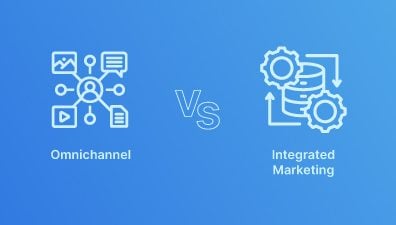In every industry, businesses are always seeking innovative strategies to grow and improve. Key objectives include expanding customer reach, increasing conversion rates, and enhancing online experiences. A cutting-edge approach to achieve these aims is through headless eCommerce. This technology separates a website’s front-end design from its back-end functionality, enabling more agile and customized web experiences. Employing Application Programming Interfaces (APIs), it allows seamless design updates without complex back-end coding, offering unparalleled flexibility over traditional, rigid web formats.
Globally, numerous companies are adopting headless eCommerce to revolutionize their online presence and achieve strategic goals. Discover how 10+ different best headless commerce example have successfully implemented this solution and how it might benefit your business.
Table of Contents
Top 10+ Best Headless Commerce Example That Transform Businesses
Headless eCommerce offers advantages such as improved customization and faster website loading times, contributing to a cohesive brand experience. This approach is increasingly popular globally, as it enhances customer interactions across various sectors.
Below are 10+ successful headless commerce example that can inspire you:
Nike
Nike, Inc., a leader in the global sports apparel and footwear market and the best headless commerce example recognized the need to cater to its increasingly mobile-centric consumer base. To achieve this, Nike embraced a mobile-first strategy for its eCommerce website, ensuring the site was optimized for mobile users. This optimization included tailored visuals and call-to-action elements designed for smaller screens.
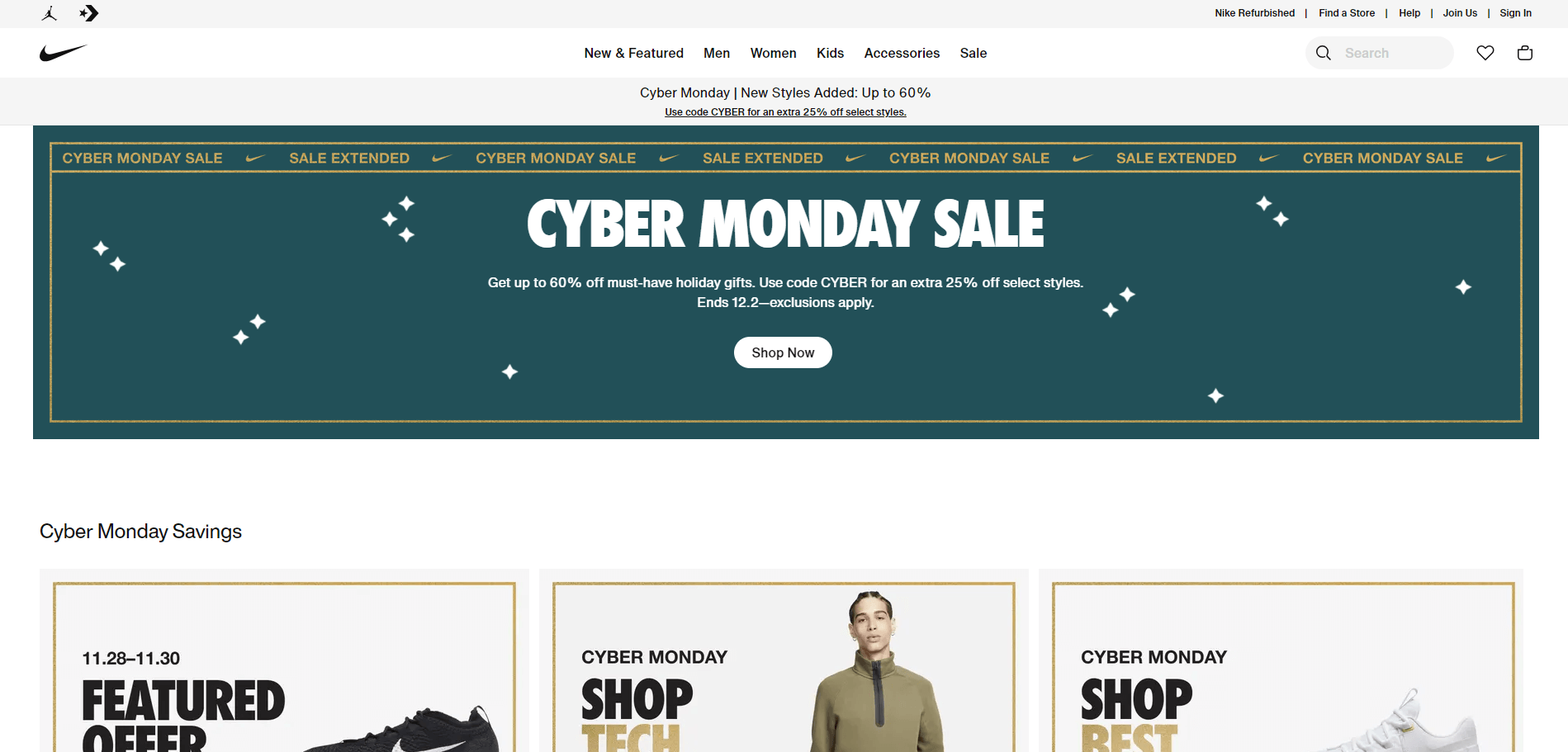
Implementing a headless eCommerce architecture, specifically a React Single Page Application (SPA) coupled with a Node.js backend for frontend (BFF), allowed Nike to fine-tune user experiences across various pages. This approach enabled them to create mobile-friendly images and links, enhancing the overall browsing experience on mobile devices.
By adopting this headless eCommerce structure, Nike could rapidly customize its mobile front end without constraints from the back end. This agility was crucial in differentiating Nike from competitors like Adidas, allowing swift implementation of changes and innovations.
Using Adobe Commerce as its platform further facilitated this transformation, empowering Nike to significantly boost sales through mobile channels by delivering an optimized small-screen shopping experience.
Venus
Venus, a prominent women’s apparel retailer with a global customer base, leveraged headless eCommerce to revolutionize its online presence. Initially, Venus grappled with slow webpage loading times, with over 80% of their pages taking more than one second to load. This was significantly impacting their conversion rates and overall customer experience.

To address these challenges, Venus transitioned to a headless commerce architecture. They adopted a React Progressive Web App for their storefront and restructured their infrastructure into a Backend for Frontend (BFF) system.
This transformation resulted in a dramatic improvement in site speed, with over 70% of pages now loading in under a second, marking an improvement of over 50%. Consequently, Venus experienced a 24% increase in conversion rates and notably enhanced customer retention.
The headless eCommerce structure was instrumental in reducing page loading times for Venus, creating a more seamless and enjoyable browsing experience for customers. This directly contributed to improved conversion rates and positioned Venus more favorably in the competitive online retail landscape.
Redbox
Redbox, an American company known for its DVD, Blu-Ray, and video game rental services, is a prime example of a business perfectly suited for the headless commerce approach. With a focus on showcasing movies and games through engaging visuals, Redbox sought to enhance its homepage and other visual elements to boost conversions.
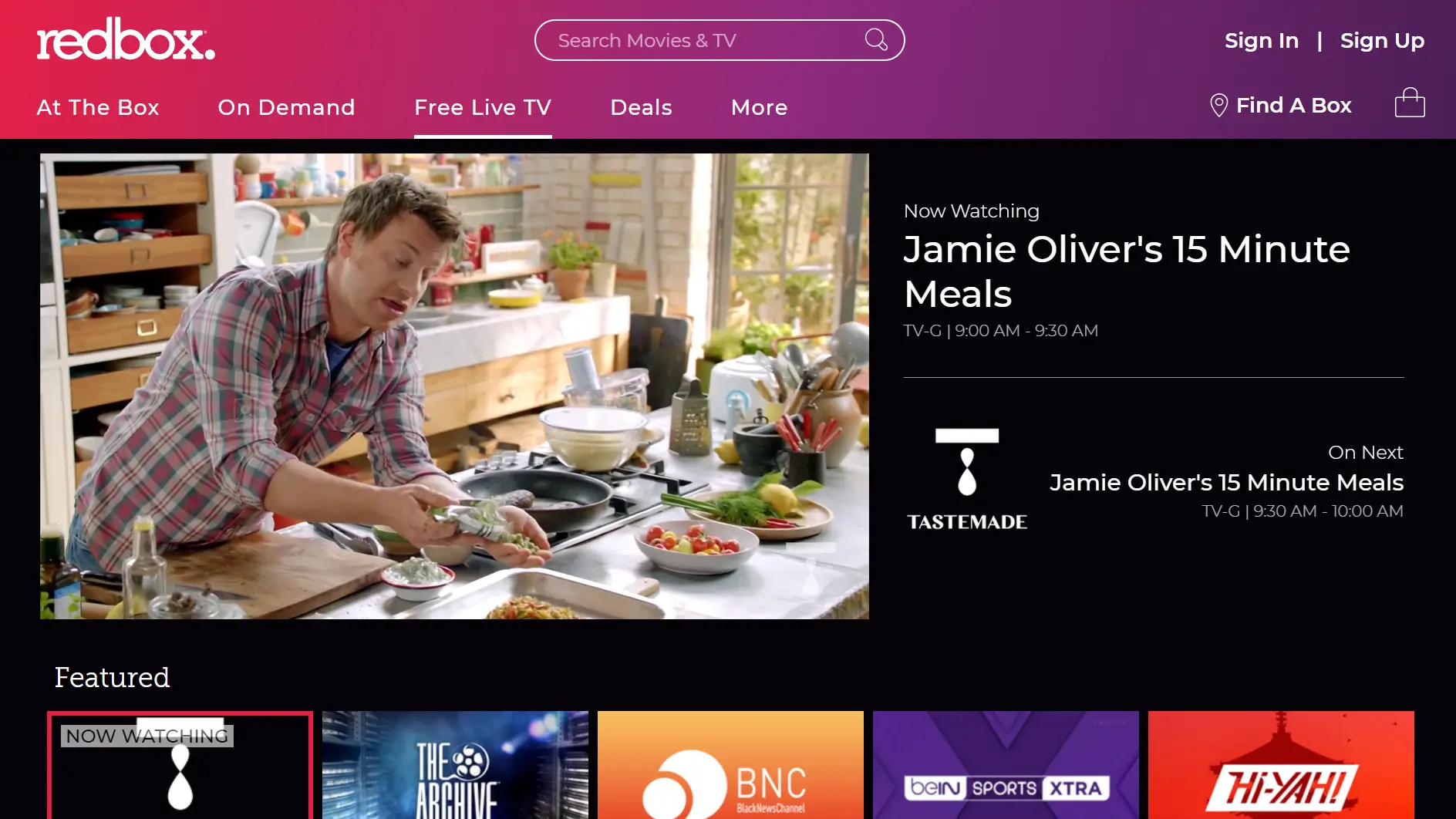
To achieve this, Redbox implemented a headless eCommerce structure, developing single-page applications (SPAs). SPAs load a single document and use APIs to update information as needed, reducing the need to load each page of a website separately. This approach significantly improves loading times and enhances user experience.
Leveraging these technological advancements, Redbox successfully relaunched its website with compelling content. Users now enjoy a more fluid and engaging browsing experience, with faster loading speeds and visually appealing displays of media content. This transformation aligns well with Redbox’s emphasis on visual engagement, driving both user satisfaction and conversion rates.
Target
Target, a renowned retailer offering an extensive range of products including home goods, clothing, and groceries, identified a unique opportunity in the shifting landscape of digital commerce.
Facing intense competition from giants like Amazon and Walmart, Target realized that a significant portion of its customers, nearly 80%, began their shopping journey on one device and completed it on another.
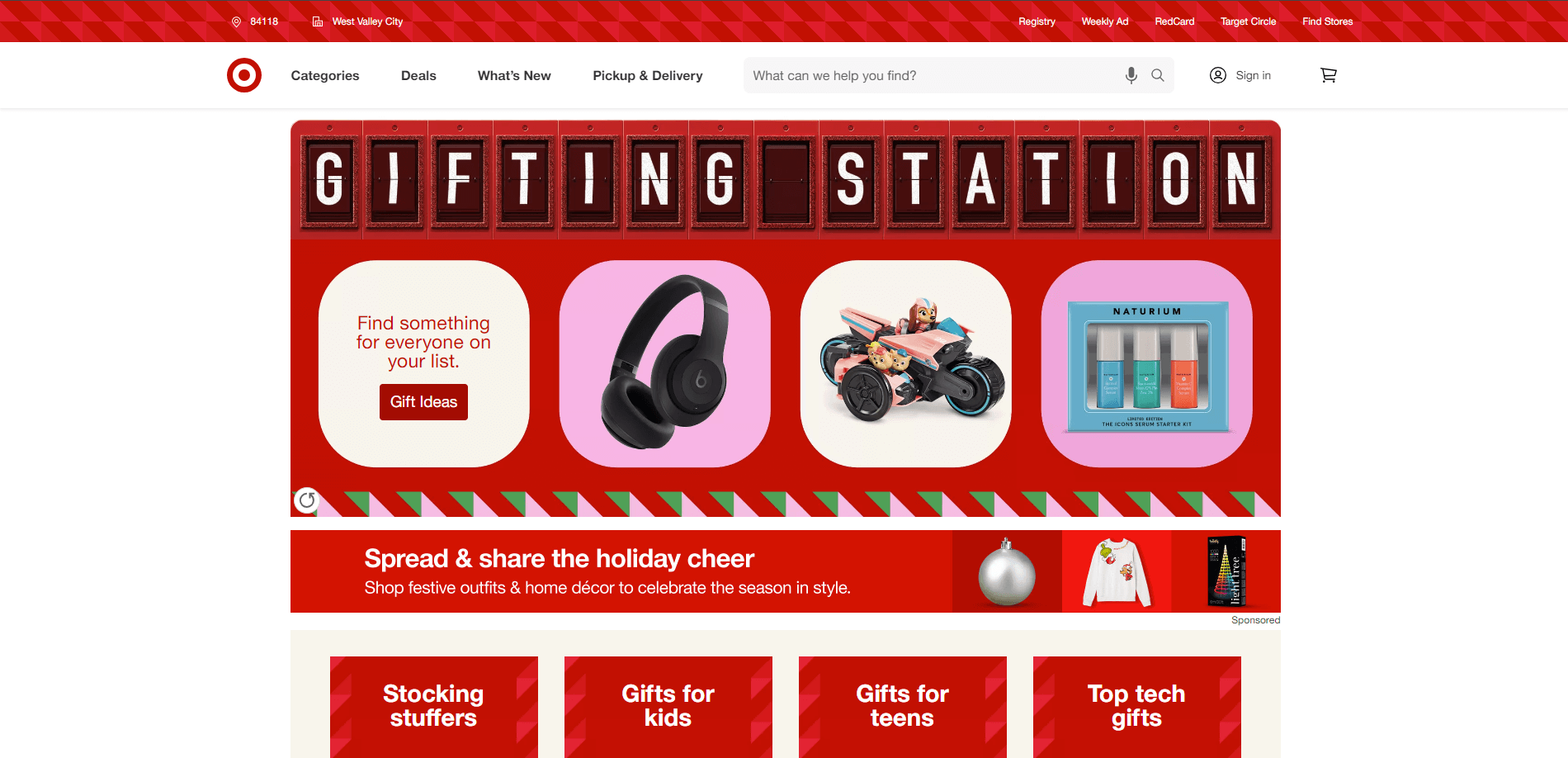
To capitalize on this insight, Target embraced headless commerce, enabling a seamless cross-device shopping experience. This strategic move allowed customers to effortlessly transition between devices during their buying journey.
As a result of adopting a headless structure, Target created a more unified customer journey across all channels, leading to a notable increase in conversion rates. This shift not only enhanced customer satisfaction but also positioned Target competitively in the evolving digital retail space.
Under Armour
Under Armour, a global leader in athletic apparel and gear has been at the forefront of adopting innovative eCommerce solutions, such as the headless, progressive web application Mobify. This technology has enabled Under Armour to offer faster and more fluid user experiences across both mobile and desktop platforms.
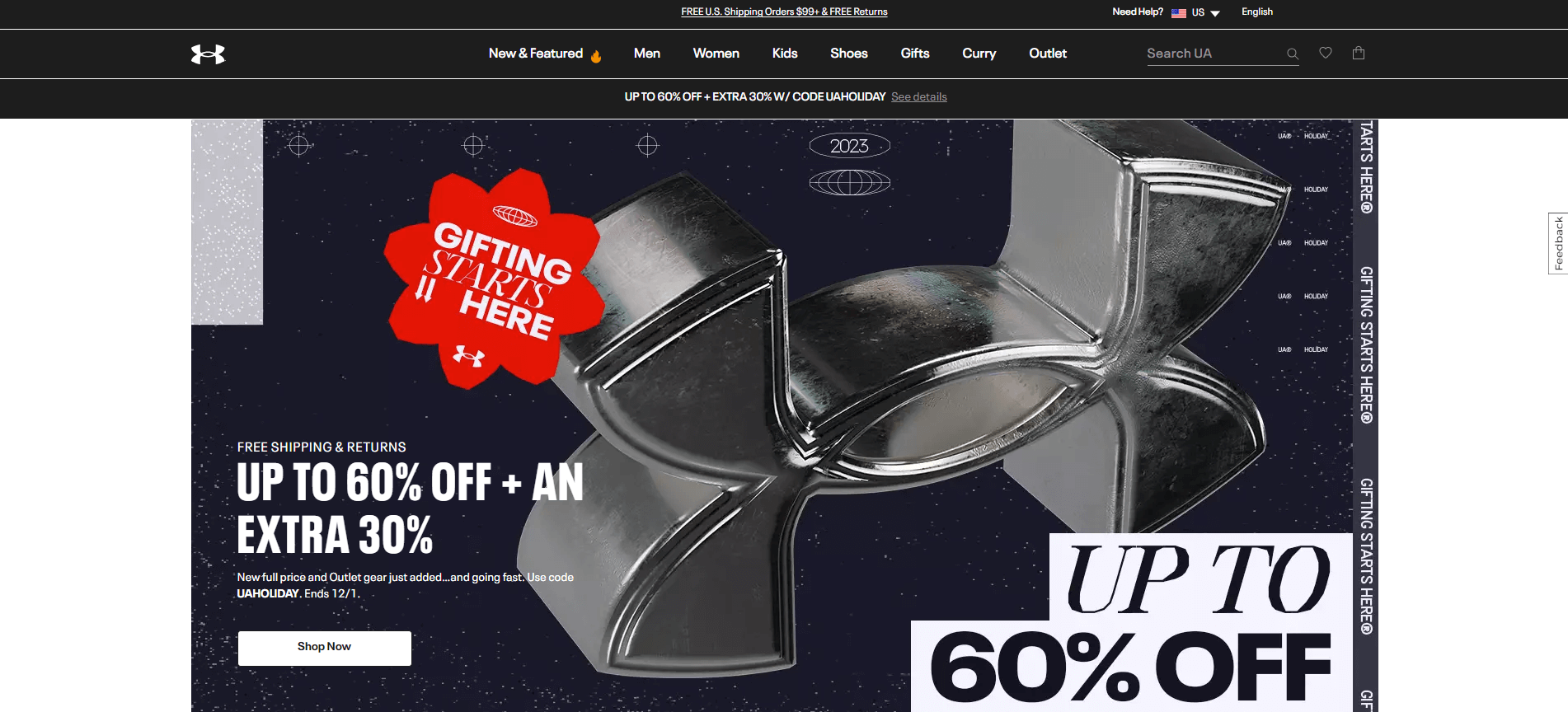
The headless commerce platform integrates various data sources including catalog information, traffic history, payment data, and content management, with insights from their order management system. It allows for personalized customer experiences, taking into account factors like location, purchasing history, activity, and workout logs.
These advancements have significantly enhanced customer engagement and satisfaction, leading to notable increases in revenue and retention rates. Under Armour’s commitment to headless platforms and personalized customer experiences continues to solidify its position as a top choice for consumers globally.
Staples
Staples, a UK-based office supplies giant, and a notable headless commerce example, recognized the need to revamp its online presence to manage its extensive and frequently updated product catalog. The company’s catalog, encompassing a wide array of merchandise, was siloed and lacked the necessary flexibility for efficient updates.
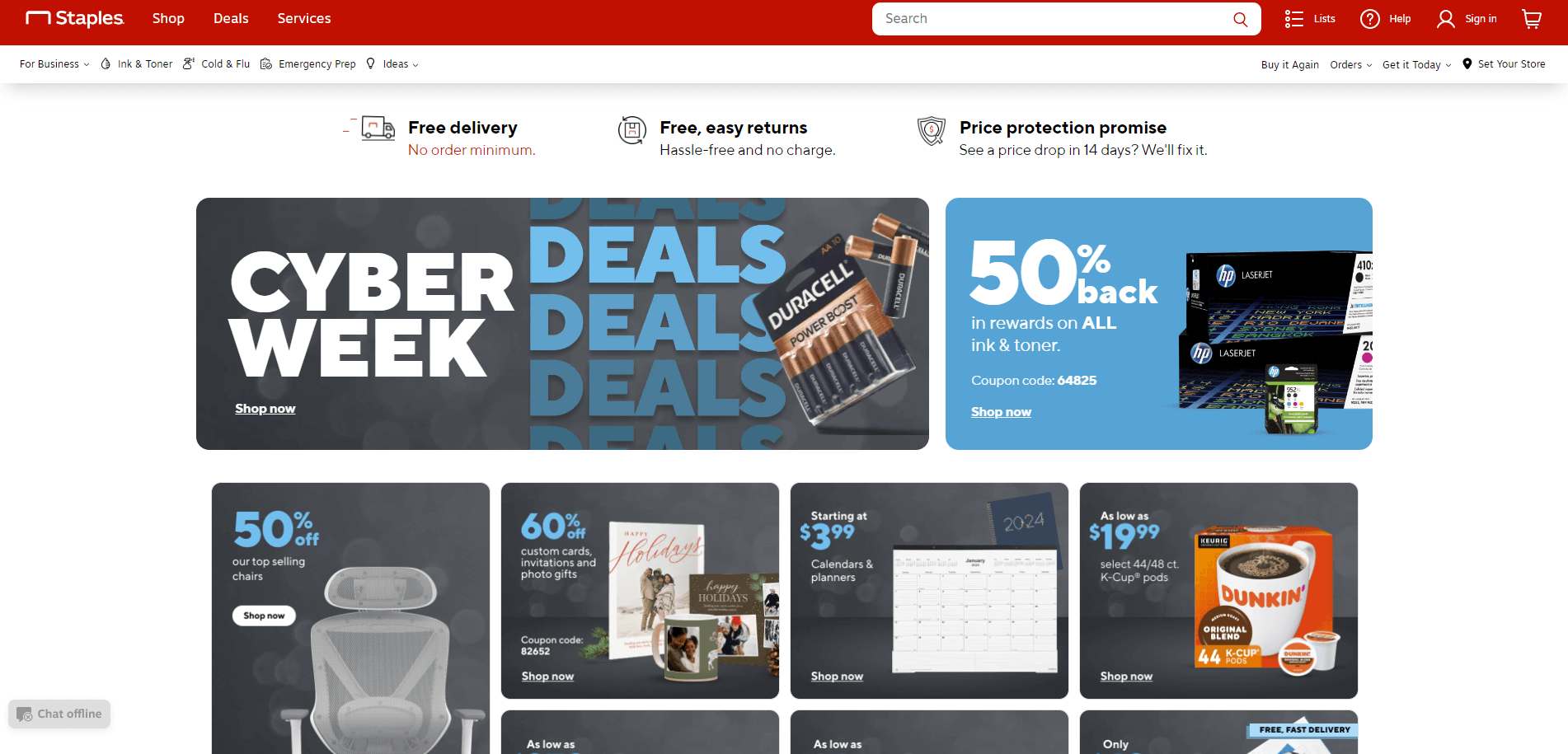
By adopting a headless commerce approach on the Shopify Plus platform, Staples achieved significant improvements. This transition enabled the company to update its product catalog swiftly and with greater ease.
The headless architecture also allowed Staples to optimize its website for various functionalities, including features like user registration/login, ordering by item number, and reordering previously purchased items. This strategic move towards a more agile and adaptable eCommerce system has enhanced Staples’ operational efficiency and customer experience.
Kirkland’s
Kirkland’s, a well-known home decor and furnishings company, faced challenges with slow loading times on its website due to its extensive product catalog. To enhance their site’s performance and optimize customer experiences, Kirkland’s adopted a headless eCommerce approach.
This strategic move allowed the brand to expand its sitemap and improve functionalities on each webpage while maintaining rapid loading speeds. Notably, Kirkland’s implemented innovative solutions such as a one-click login process and a thumbprint checkout option, significantly enhancing the user experience.
As a result, Kirkland’s has not only become one of the fastest retail websites but also a pioneer in introducing cutting-edge features like thumbprint checkout in the eCommerce world.
Victoria Beckham Beauty
Victoria Beckham Beauty, a luxury beauty brand offering high-end products, leveraged headless eCommerce to create a distinctive online presence.
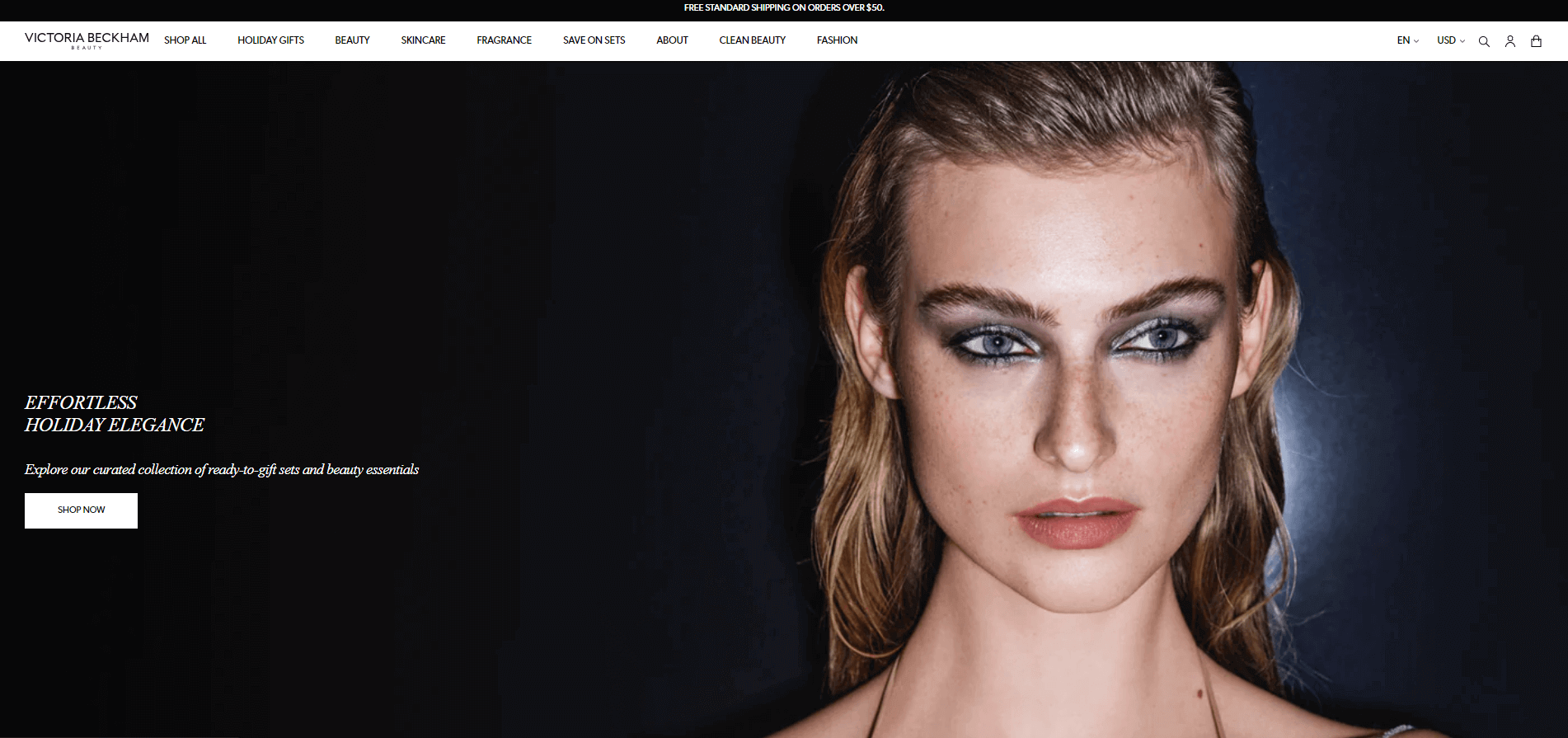
The brand chose a headless eCommerce platform, specifically Shopify Plus, for its flexibility and rapid implementation capabilities. This approach enabled Victoria Beckham Beauty to align its website’s design closely with its brand identity and expedite its launch.
The products developed through Victoria Beckham’s unique perspective, are designed to fill gaps she perceived in her own makeup bag, focusing on cleanly formulated, high-performance beauty solutions. This strategy caters to modern individuals who lead dynamic lives, ensuring the brand’s offerings resonate with its target audience.
Lancôme
Lancôme, a renowned French brand specializing in luxury perfumes and cosmetics, embraced headless eCommerce to enhance its online platform. By transitioning to Progressive Web Applications (PWAs), Lancôme created a more app-like experience on the web, making its offerings more accessible to a broader range of consumers.

This shift to a headless commerce structure led to significant improvements in Lancôme’s online sales. The brand experienced a notable 17% increase in conversion rates, underscoring the effectiveness of the headless approach in facilitating easier and more convenient mobile purchases for their target audience. This strategic move has been instrumental in boosting Lancôme’s overall sales and strengthening its position in the global luxury cosmetics market.
Casper
Casper, a global sleep company that revolutionized the mattress industry since its inception in 2014, is an excellent example of leveraging headless commerce for business optimization. Known for its innovative approach to mattress design and sales, Casper employs a direct-to-consumer model that ensures competitive pricing and quality.
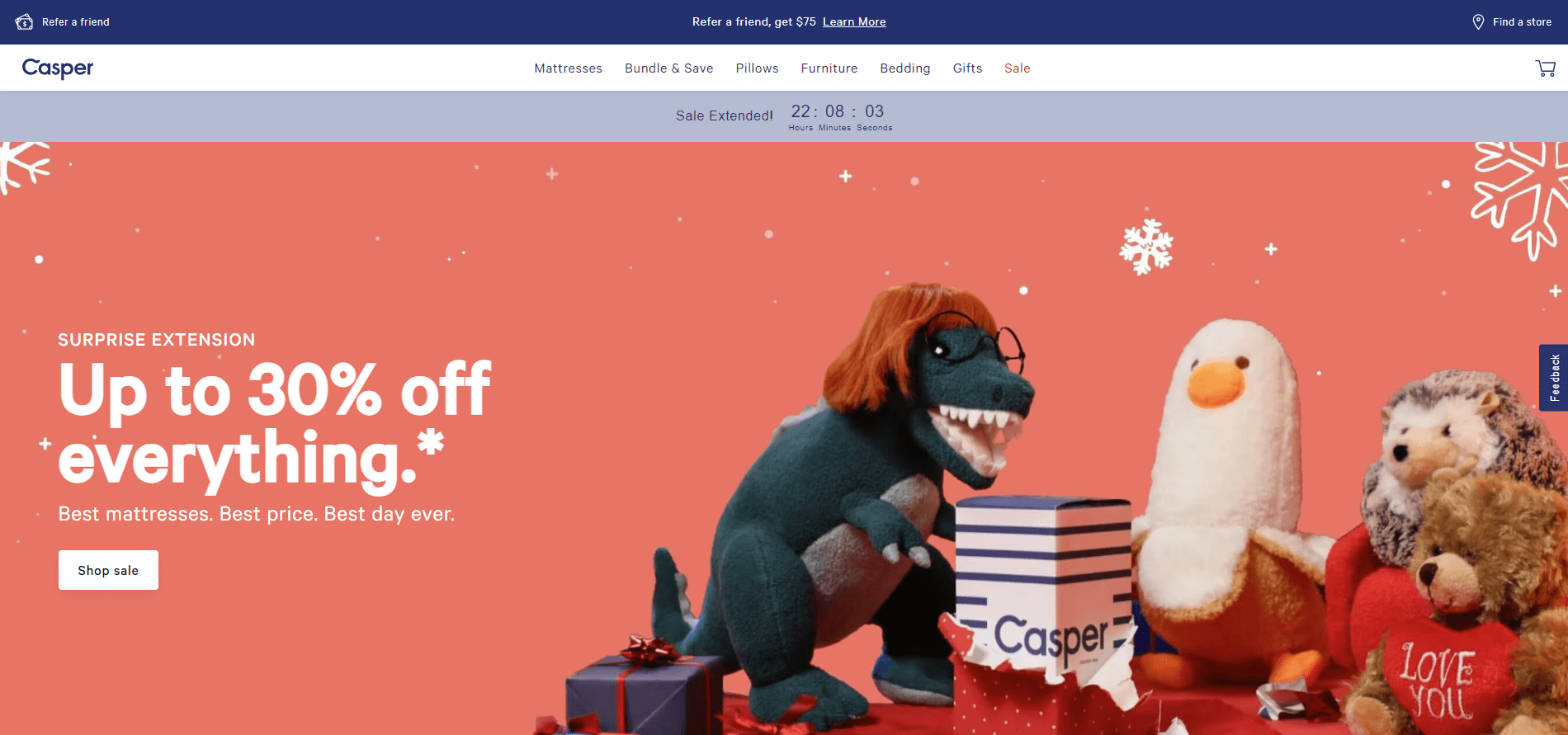
By utilizing Shopify Plus’ headless commerce platform, Casper has been able to offer a range of customized features and integrations. These enhancements facilitate a variety of benefits, including more accurate performance reporting, a faster checkout process, enhanced visibility into sales and conversion rates, improved immediate customer service, and a reduction in site-related issues.
This strategic approach has been crucial in Casper’s successful expansion both domestically and internationally, solidifying its status as a premium mattress company.
United Airlines
United Airlines, a major player in the U.S. aviation industry, and an outstanding headless commerce example, has prioritized providing swift and top-notch booking experiences for its passengers. Recognizing the importance of efficient and smooth processes from flight selection to airport check-in, the airline turned to headless eCommerce to improve its service delivery.
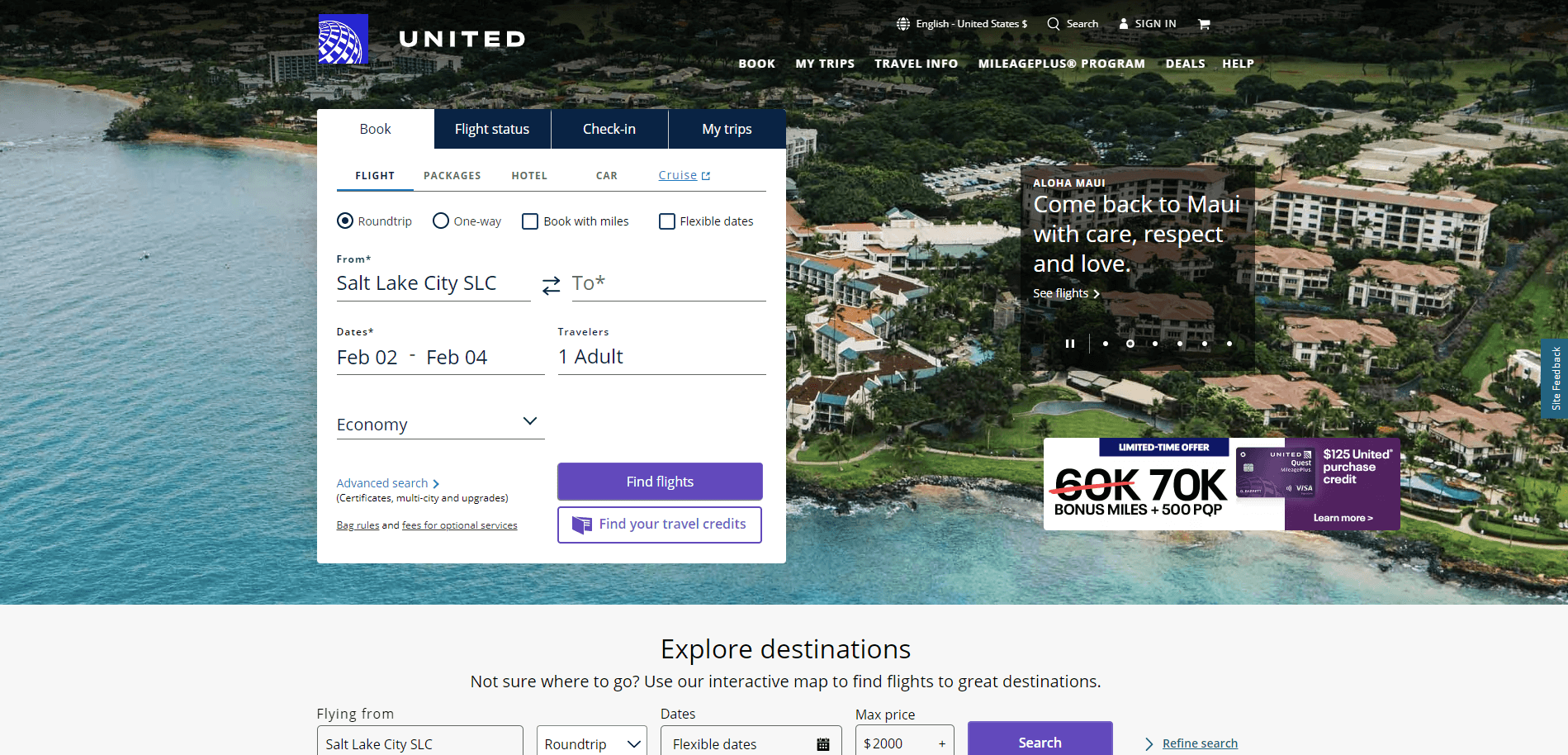
By adopting a headless eCommerce approach, United Airlines was able to refine its user flows across various channels. This strategy enabled seamless integration and synchronization of booking procedures between mobile apps and desktop platforms, offering customers faster loading times and the convenience of managing flights across all devices. This technological advancement has likely contributed to enhancing customer satisfaction and loyalty.
Rothy’s
Rothy’s, a company known for its sustainable and stylish footwear, embraced headless commerce to revolutionize its online presence. By adopting a headless structure, Rothy’s aimed to enhance site functionalities and embrace the flexibility that this architecture offers.
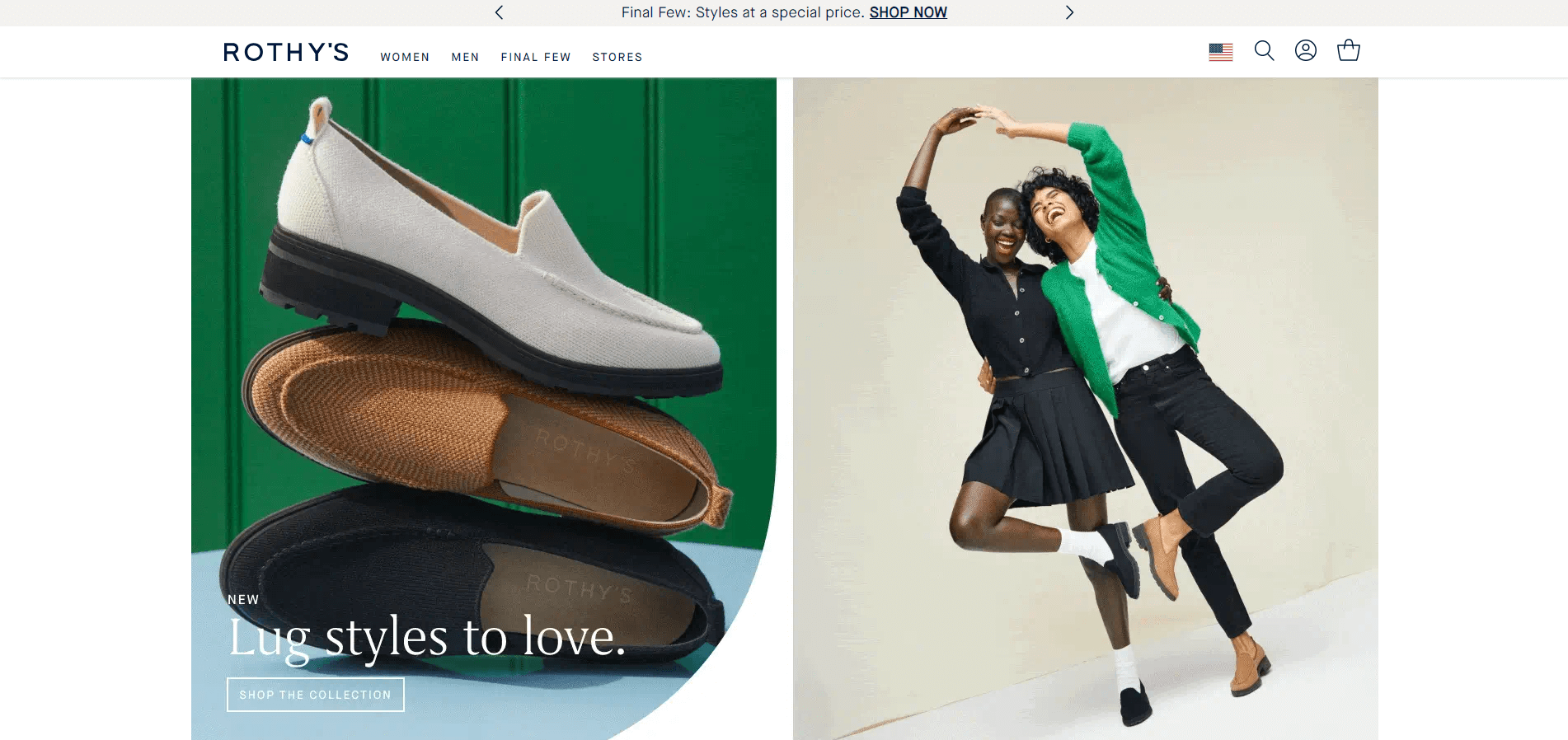
The transition to a headless architecture significantly benefited Rothy’s, particularly in expanding its international reach. It simplified the process of adding expansion stores in various global regions, allowing the brand to efficiently reuse backend data such as product catalogs and content across different front-ends.
This flexibility enabled Rothy’s to implement dynamic pricing, display content in multiple languages, and facilitate international sales more effectively, marking a significant stride in their global business strategy.
Benefits of Headless Commerce
Headless eCommerce represents a modern approach to website design, where the front end, the part of your website that customers see and interact with, is separated from the back end, which includes the underlying systems, data, and logic. This separation not only provides a clear distinction between how your platform looks and operates but also enhances its interactivity and accessibility.
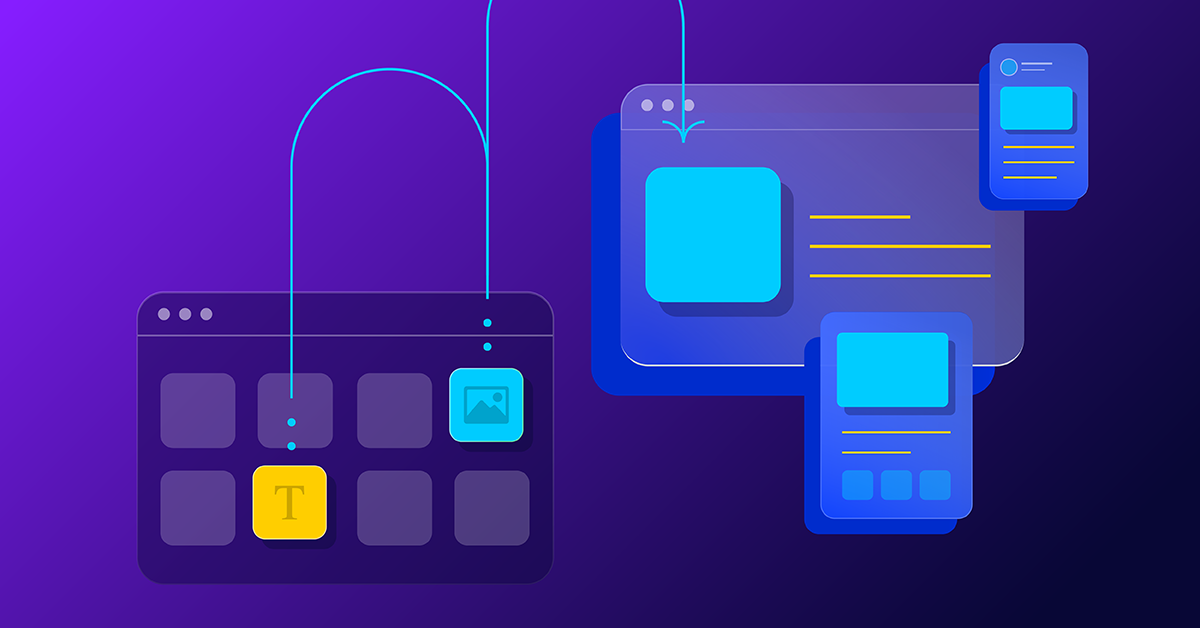
By adopting a headless architecture, you gain extensive control over your website’s design and functionality. This disconnected structure empowers you with complete autonomy over the website’s front-end design, elevating your brand’s digital presence.
The growing shift towards headless eCommerce globally is primarily attributed to its inherent flexibility and several other key advantages, which include:
- Enhanced Customization and Flexibility: Headless eCommerce allows businesses to tailor their online presence with greater precision. By decoupling the front end (what the customer sees) from the back end (where data is processed), companies can design unique customer experiences that stand out in a crowded digital marketplace. This separation means the front end can be updated or changed without affecting the core systems, allowing for rapid adaptation to market trends, customer feedback, or branding changes.
- Improved User Experience Across Multiple Platforms: With headless eCommerce, businesses can ensure a consistent and high-quality user experience across various devices and channels. Since the back end is separated from the front-end presentation layer, the same back end can serve a website, mobile app, IoT device, or even a smartwatch app with equal efficiency. This multi-platform compatibility is essential in today’s market, where customers expect seamless interaction with brands across different digital touchpoints.
- Faster Website Performance: Websites built on a headless architecture can load faster because they typically use lightweight, modern front-end frameworks. This speed is crucial for retaining customer attention and reducing bounce rates. Faster load times also contribute positively to search engine rankings, as search engines like Google prioritize user experience, including page loading speed, in their algorithms.
- Streamlined Content Management: Headless eCommerce platforms often integrate seamlessly with various Content Management Systems (CMS), enabling businesses to manage content more effectively. Content creators and marketers can update content without needing developer intervention for every change. This agility allows for more dynamic content strategies and quicker responses to market or consumer behavior changes.
- Enhanced SEO Capabilities: The flexibility in front-end development afforded by headless eCommerce can lead to better Search Engine Optimization (SEO). Developers can create more streamlined, clean code and ensure that the website structure is optimized for search engines. Additionally, the ability to update content quickly and easily helps in keeping the site relevant and engaging, which is a critical factor in SEO rankings.
- Scalability and Future-Proofing: As business needs to grow and change, headless eCommerce systems can scale more easily than traditional eCommerce platforms. They are designed to handle increased traffic and more complex operations without a complete overhaul. This scalability ensures that businesses can grow without being hindered by their technology. Additionally, as new technologies emerge, a headless approach allows businesses to integrate these innovations without significant restructuring.
- Better Integration Capabilities: Headless eCommerce platforms can integrate more smoothly with other business systems like Customer Relationship Management (CRM), Enterprise Resource Planning (ERP), and various marketing tools. This integration capability enables a more unified and efficient operation, as data can flow seamlessly between different departments and systems, enhancing overall business performance.
When a Business Should Apply Headless Commerce?
As demonstrated by numerous headless commerce examples across various industries, headless eCommerce stands out as a versatile and superior solution. It empowers you to create a tailor-made platform that aligns with your specific requirements, going beyond just addressing short-term issues. Headless commerce is a strategic choice, enabling you to progress toward your business objectives and respond effectively to consumer needs.
Whether your aim is enhancing customer satisfaction, boosting conversion rates, or increasing overall revenue, headless eCommerce is a valuable tool. It offers the flexibility to overhaul existing systems and adapt them as needed. This adaptability allows you to experiment with new approaches and modify them to better fit your business model.
However, it also demands a comprehensive understanding of the site’s architecture and the interplay between various modules, as well as a solid grasp of best practices for their effective utilization. Understanding when to implement headless eCommerce is essential for leveraging its benefits effectively.
- Business Scaling Rapidly: If your business is experiencing fast growth or preparing for it, headless eCommerce is ideal. Its scalable architecture can handle increased traffic and complex operations without the need for a complete system overhaul.
- Need for Multi-Channel Presence: Companies looking to provide a seamless customer experience across multiple platforms (like web, mobile, social media, and IoT devices) should consider headless eCommerce. It enables consistent and integrated experiences across all channels.
- Frequent Updates and Customizations: For businesses that need to frequently update their website’s design or features in response to market trends or consumer behavior, headless eCommerce offers the agility and flexibility required for such dynamic environments.
- High Demand for Personalized Experiences: If personalization is a key component of your business strategy, headless eCommerce can provide the necessary tools. It allows for more tailored and engaging user experiences based on customer data and behaviors.
- Complex and Diverse Product Offerings: Businesses with complex product lines or services, requiring detailed descriptions, custom configurations, or varied presentation across different platforms, can benefit from the adaptability of headless eCommerce.
- Global Expansion Goals: For businesses aiming to expand globally, headless eCommerce can manage the diverse needs of a global audience, such as language variations, currency differences, and localization requirements.
- Integration with Advanced Technologies: If your business strategy involves integrating cutting-edge technologies like AR/VR, AI, or advanced analytics, headless eCommerce provides the necessary flexibility and compatibility for these integrations.
In Conclusion
The top 10+ best headless commerce example we’ve explored underscore the significant impact that headless commerce can have on a business’s online presence and overall growth. For companies aiming to stay at the forefront of innovation, deliver exceptional customer experiences, and maintain a competitive edge, adopting a headless commerce approach is not just an option; it’s an imperative. As the digital commerce arena continues to evolve, headless commerce will undoubtedly play a pivotal role in shaping its future.
If your goal is to stay abreast of the most efficient and cost-effective trends in the eCommerce realm and integrate headless technology into your Magento store, Magenest boasts a team of experts perfectly equipped to assist you in this endeavor. With the Specialization in Adobe Commerce for the APAC region and multiple certified developers, we guarantee to bring the best quality and world-standard Magento Headless development services to the table!



